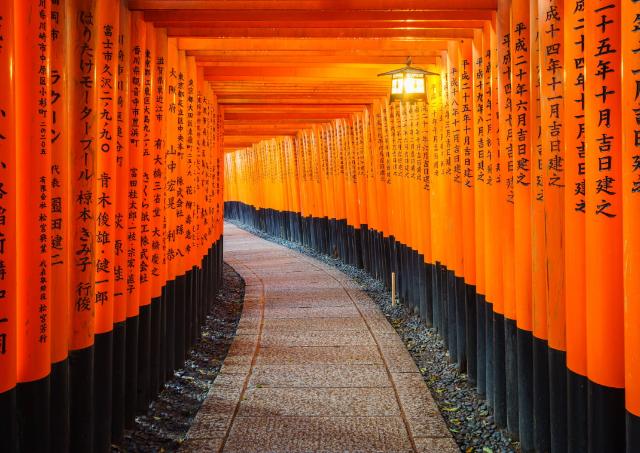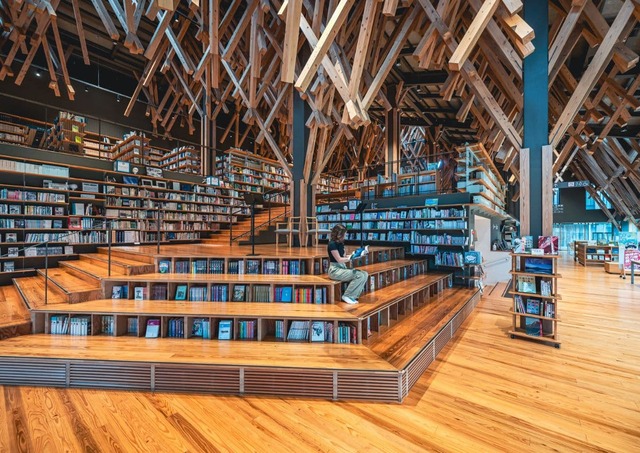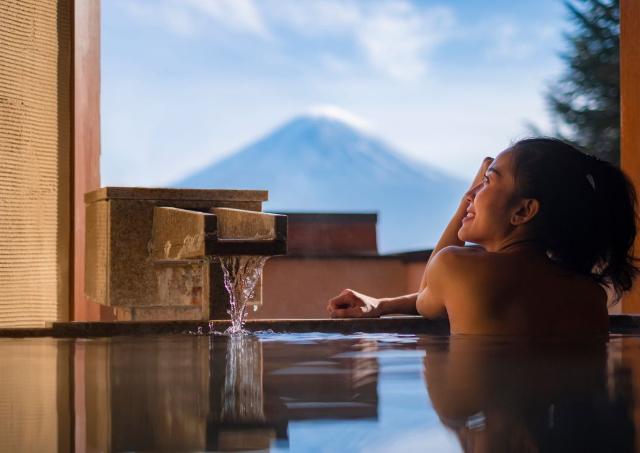Kimono 101: History, Types, and Where to Experience Them in Japan
Whether wandering through the Gion district of Kyoto or shopping at the stalls of Tokyo's Sensoji Temple, you're bound to notice people dressed in traditional kimono in the swirl of the crowds around you.
While many kimono wearers are visitors to Japan, others are Japanese, often young women who have few occasions to wear kimono in their daily lives. While kimono is no longer an article of clothing that is in most Japanese wardrobes, they maintain a strong appeal for many who value their connection to traditional culture. Let's take a closer look at this Japanese garment, looking at its history to help predict its future.
History of Kimono in Japan
The beginnings of kimono as clothing date back to Japan's Heian Period (794-1185). At that time, kimono wasn't a style of clothing; it was clothing itself. Hence, the word kimono is literally translated as "something to wear." The Japanese kimono evolved from traditional clothing brought to Japan by Chinese envoys. While Chinese clothing was imported to Japan for centuries leading up to the Heian Period, the trade stopped during this period, necessitating the creation of a new style of clothing, which became the kimono. Over the centuries, the structure of kimono has not changed much, still made from a single, narrow bolt of cloth called tanmono with minimal tailoring.
On the other hand, kimono fabrics have undergone numerous changes over the years, both in terms of material and patterns. Early kimono were almost exclusively silk, and continued to be the predominant fabric of kimono well into the 20th century. The cultivation of cotton between the 14th and 16th centuries facilitated the creation of the cotton kimono known as yukata, which was once merely considered a bath robe for the noble class. Other lightweight textiles, such as linen and hemp, also came into use and finally polyester, which brought kimono into a new age of bright colors and ease of maintenance.
Types of Kimono
Kimono can be divided into just two types: kimono and yukata, with yukata being the casual summer style of kimono made with cotton or other lightweight fabrics. However, among the various kimono types for women, there are five types that differ mainly in terms of formality. Let's take a look at these subtypes of kimono, roughly ordered from casual to formal.
Komon - The Everyday Kimono
In the days when kimono were worn every day in Japan, which is really less than 100 years ago, komon were the type of kimono most commonly seen. They could be made from rough silk called tsumugi or cotton, with simple repeating patterns. Traditionally, as it is today, one would not wear a komon kimono to a formal event such as a wedding or graduation ceremony.
Photo: Todd Fong
Houmongi - The Flashy Semi-Formal Kimono
Houmongi (hōmongi), literally meaning “visiting wear,” are gorgeous kimono that come in beautiful colours enhanced by elegant patterns dyed or embroidered over portions of the garment. Common patterns are scenes of nature or flowers that might begin at the shoulder and flow down the sleeves to the lower hem of the kimono. They may also contain embroidery of family crests (kamon). Traditionally, unmarried women often wore this type of kimono as they tended to attract admiring glances from passers-by. Today, it is often chosen for occasions such as weddings (as a guest), tea ceremonies, formal parties, or dinners.
Iro Muji - The Modest Semi-Formal Wear Kimono
Iro muji kimono are made in various solid colours and are typically worn for more formal occasions, where the wearer does not want to attract attention to herself. With its simplicity, it can be dressed up or down depending on the occasion and accessories. More exquisite iro muji kimono might have designs woven into them, but never dyed different colours. The formality of iro muji can also be enhanced by the presence of kamon, the family crest of the wearer, either one or three kamon, with the latter being more formal. Iro muji are usually worn for family celebrations, graduations, or tea ceremonies.
Tomesode - The Evening Gown of Kimono
Tomesode are a formal type of kimono generally worn by married women. They are recognized by elaborate patterns which often include gold dye or embroidery thread that is only below the waist. The most formal is the black version, called kuro tomesode, which is exclusively worn by married women. Tomesode usually have the mon crests, at least three and sometimes five for very formal occasions. A bride who wears a western wedding dress for her wedding ceremony might change into a tomesode for her reception.
Photo: Todd Fong
Furisode - Kimono Formalwear
Furisode are the easiest type of kimono to recognize, with long flowing sleeves and all-over dyed patterns in bright, cheerful colours. While many foreign visitors associate the furisode with geisha, it is the apprentice maiko who are the ones actually wearing them; most geisha wear tomesode. Young women graduating from high school, university, or celebrating seijinshiki, Coming of Age Day, also wear this type of kimono on their special day. Furisode are a symbol of youth, so it is rare to see older or married women wearing this type of kimono.
Of course, there are other types of kimono that are rarely seen and worn mainly by performers or at traditional events. These include the Shiromuki wedding kimono, the Junihitoe worn by the women of the Imperial family, and the Hikizuri, used mainly in traditional dance.
Types of Men's Kimono
Men also wear kimono and yukata, but unlike women, there are really no sub-types of men's kimono. Fashion-forward men might be disappointed to find out that men's kimono are rather drab, made in a few subdued colours in either solids or simple patterns. Today, some enterprising kimono shops have remade women's kimono to fit men, giving men a few more interesting styles to wear.
How To Wear a Traditional Kimono
Although kimono are simple garments, they are surprisingly challenging to wear, especially for women. The main reason is that kimono come in one shape while people's bodies do not, so tailoring is done at the point of dressing, rather than making the garment. While this means that people of different body types can generally share a kimono, it also requires more skill to properly dress in one.
The other challenge of kimono is coordination; kimono are not meant to be worn alone but with a set of accessories that complement the garment in colours and textures. Nagajuban is a light kimono-like underwear worn under the kimono. The collar of the nagajuban is exposed, and the colour of the collar should complement the kimono. Recently, nagajuban collars can be covered in lace or leather for a completely different look. There are many other accessories, like cords, cloth, bags, and sandals that add beautiful details to the outfit, but none are as important as the obi.
The obi is a wide belt that many people believe keeps the kimono wrapped around you. In practice, however, the obi is mainly for decoration. Women's kimono are varied in length by creating a fold in the midsection and tying it off with cotton bands. The obi serves to hide the fold and bands, as well as create a contrasting or complementary look to the kimono itself.
Like kimono, there are several types of obi, from the casual Hanhaba obi, a narrow type of obi commonly used with yukata or komon kimono, to the formal Fukuro obi, often made with gold or silver thread and used to contrast formal kimono styles. When browsing used kimono shops, you'll also find many Nagoya obi, which are permanently prefolded fukuro obi in less formal patterns and styles. Obi for women are usually tied high, just under the bust line, while men wear obi much lower, around their hips just below the waist.
Photo: Todd Fong
There are many online resources to teach you how to wear a kimono, but most people visiting Japan only want to try it once. So, the simplest solution is to visit a kimono rental shop where the price of the rental includes professional dressing. A kimono professional can also help you select accessories that complement your kimono selection, making it quick and easy for you to be out strolling around in your fashionable outfit rather than agonizing over the millions of choices.
How to Wear a Yukata
Wearing a yukata in Japan is a different story, however, as you will often be provided with a yukata if you stay at a traditional Japanese ryokan inn or visit an onsen town. In this case, you may not have a knowledgeable person available to dress you. But don't worry, dressing in a yukata is much simpler than dressing in a kimono.
For starters, yukata do not require multiple layers of accessories like kimono. You can wear your regular underwear underneath a yukata. The obi provided at the ryokan or onsen is usually a simple narrow band or a cloth sash that can be tied in any fashion you like, keeping the yukata closed.
In fact, the most important rule you need to follow when dressing yourself in yukata is to be sure to put the left side of the yukata over the right. Doing it the opposite way is reserved for dressing the dead for a funeral, so it is a mistake that most Japanese people find difficult to ignore!
Where to Experience Kimono in Japan
If you are interested in experiencing dressing in kimono and strolling around the neighborhood, chances are you are already aware of the most popular places to try this in Tokyo and Kyoto. Dozens of kimono rental shops are located in Tokyo's Asakusa area around Sensoji Temple, Tokyo's top spot for kimono strolling. In Kyoto, many shops are located near Gion, Higashiyama and Arashiyama, so visitors can pose as maiko or clack along the stone-lined slopes of Ninenzaka.
Photo: Todd Fong
However, you can escape the crush of the kimono-clad crowds in lesser-known destinations that are also great for kimono strolls. Kawagoe in Saitama and Kamakura in Kanagawa are day trips from Tokyo that also have complementary landscapes for a kimono walk that are far less crowded, at least on weekdays. Kanazawa is an alternative city to Kyoto with beautifully preserved Edo Period neighborhoods perfectly suited for kimono portraits. And well off the beaten path, the former castle town of Kitsuki in Oita Prefecture is a picture-perfect town for an all-day kimono stroll visiting the castle, former samurai residences, and attending a traditional Edo theatrical performance.
An onsen town is a great place to experience wearing yukata year-round. Onsen towns like Kurokawa Onsen in Kumamoto or Ginzan Onsen in Yamagata encourage visitors to don a yukata like a bath robe and hop between different bathing facilities. During colder periods, you can wear an outer jacket called haori over the lightweight cotton garment to stay warm as you walk around.
And summer festivals are the perfect time to wear yukata, joining the energetic crowds of locals and tourists alike engaging in traditional dancing, eating festival foods, and watching exciting entertainment such as fireworks. Best of all, you can find summer festivals nearly anywhere you go in Japan, so pick your favourite location, put on a yukata and dive right in.
Photo: Todd Fong
Where to Purchase Kimono and Yukata
If you are inspired enough to purchase a kimono or yukata as a Japanese souvenir, you'll find plenty of places to do so. First, decide whether you want to purchase a new garment or a vintage one.
Many stores in major tourist areas, such as Asakusa in Tokyo or Higashiyama in Kyoto, sell new yukata that are easy for you to learn to wear by yourself, making them a lightweight gift for friends back home. You can also often purchase the unique yukata created for a specific ryokan in the gift shop, making it an interesting souvenir.
Shopping for new kimono can be more challenging, as new kimono are often custom-made from a bolt of tanmono fabric. While you are sure to get the perfect fit, it can take time to have a kimono made for you and the cost is quite expensive. This is why most people prefer to buy vintage kimono. You can find used kimono for as little as 500 yen, but these are often damaged or stained in a way that cannot be cleaned. Better quality kimono, even ones that are almost new, can be as inexpensive as a few thousand yen. But remember to properly wear a kimono, you need quite a few accessories including an obi, so ask for help from a store employee if you are going to select an entire ensemble.
Large chains like Tansu-ya sell new and used kimono and yukata with a large selection of brands and types. Their stores are concentrated in the Tokyo area but there are a few locations in Osaka and Kyoto as well. There's even a shop at Haneda Airport if you want to purchase a last-minute kimono or yukata on your way home!
Frequently Asked Questions about Kimono & Yukata
What is the difference between a kimono and a yukata?
A kimono is typically made of silk or synthetic fabrics and worn with multiple layers and accessories. Yukata are casual, lightweight summer robes made of cotton or linen and are much easier to wear.
Can anyone wear a kimono or yukata, or is it only for Japanese people?
Yes! Anyone can wear kimono or yukata respectfully. Many rental shops cater to tourists and will help you choose and wear the garment correctly.
What should I wear underneath a kimono or yukata?
For kimono, a nagajuban (under-kimono) is usually worn. For yukata, regular underwear is fine. Just remember: always wrap the left side over the right.
Can men wear kimono and yukata too?
Absolutely! Men’s kimono are more subdued in colour and design but follow the same structure. Yukata for men are especially popular at onsen resorts and summer festivals.
Where are the best places to try wearing a kimono in Japan?
Popular locations include Asakusa in Tokyo, Gion in Kyoto, and Kanazawa. For a quieter experience, try places like Kawagoe, Kamakura, or Kitsuki.
Can I try wearing a kimono during a tea ceremony in Japan?
Yes! Our Kyoto Tea Ceremony and Kimono Experience lets you dress in kimono and take part in an authentic tea ceremony inside a historic Kyoto townhouse - complete with seasonal sweets and matcha. A beautiful way to experience Japanese tradition.
Is it okay to buy a used kimono?
Yes, many people buy second-hand kimono because they’re affordable and often in excellent condition. Just make sure you also purchase the necessary accessories like an obi and undergarments.
Can I wear a kimono or yukata during a festival?
Yes! Wearing a yukata to summer festivals is especially popular, and kimono are often worn during New Year’s, weddings, and other seasonal events.
What accessories do I need with a kimono?
At minimum, you’ll need a nagajuban, obi belt, obijime (cord), obidome (decorative piece), kimono socks (tabi), and zōri or geta sandals.




